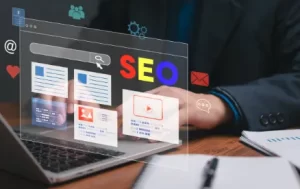In the highly competitive world of dropshipping, effective marketing is key to success. Using the right strategies to attract more customers, increase sales, and strengthen your store’s competitiveness is the goal of every dropshipping entrepreneur. Today, let’s dive into some powerful marketing tactics, including social media marketing, search engine optimization (SEO), paid advertising, and content marketing. We’ll also share real-life examples of how to create and implement a comprehensive marketing plan that works!

Social Media Marketing: Building Closer Connections with Customers
Social media is a fantastic platform for connecting with potential customers. The key is identifying which social platforms your target audience is most active on. For example, if your products cater to a younger, fashion-forward crowd, Instagram and TikTok might be your best bets.
On Instagram, high-quality visual content is essential for grabbing attention. Try posting eye-catching product photos or short videos, paired with popular hashtags to increase visibility. For instance, a dropshipping store selling fitness equipment could post videos of users working out with their products, adding hashtags like #FitnessRoutine or #HomeGym. Partnering with fitness influencers can also significantly boost credibility and brand awareness. In fact, collaborating with the right influencers can increase store traffic by 30% to 50% and drive a noticeable rise in sales.
TikTok, with its unique short-video format, has attracted a huge user base. Creating engaging, creative short videos that showcase the unique features or usage scenarios of your products can be highly effective. For example, a store selling creative home products could make a series of videos showing how their products solve everyday problems. This type of content often garners millions of views, boosts followers, and directly drives sales growth.

SEO: Helping Customers Find You
SEO is crucial for boosting your store’s ranking on search engine results pages. Start with thorough keyword research to identify high-traffic keywords related to your products. For instance, if you’re selling handcrafted leather goods, potential keywords might include “handcrafted leather” or “high-quality leather goods.”
Optimize your store’s page titles, descriptions, and meta tags by naturally incorporating these keywords. Make sure your site content is high-quality and valuable. On product pages, for example, you could include detailed descriptions of the leather-making process and materials used. Additionally, starting a blog and regularly posting content related to leather goods (like “How to Care for Leather” or “Leather Accessories for Every Occasion”) can not only provide useful information to customers but also improve your site’s search engine ranking.
One dropshipping jewelry store, for example, saw a 70% increase in organic traffic within a few months by optimizing keywords and content. As a result, their sales also grew, as more potential customers were able to easily find their store through search engines.

Paid Advertising: Quickly Attracting Targeted Traffic
Paid advertising is a fast way to gain traffic and customers. Common paid ad platforms include Google Ads and Facebook Ads.
With Google Ads, using keyword ads allows your store to appear at the top of search results when users search for related keywords. For instance, a store selling outdoor gear could run ads for keywords like “tent” or “hiking boots.” By targeting specific locations and audiences and setting reasonable bids and budgets, you can attract customers who are genuinely interested in your products. Data shows that well-targeted Google Ads can increase conversion rates by 2 to 3 times.
Facebook Ads offer extensive targeting options, allowing you to reach potential customers based on age, gender, interests, and location. For example, a dropshipping pet supplies store could target pet owners with ads featuring adorable pets using their products. This approach helped one store increase sales by 60% during the ad campaign by attracting highly relevant traffic.

Content Marketing: Building Long-Term Customer Relationships
Content marketing is an effective way to establish long-term customer relationships and boost brand loyalty. In addition to blog articles, you can create ebooks, guides, and customer review videos.
For instance, a dropshipping beauty store created an ebook titled “Everyday Beauty Tips,” which cleverly included product recommendations. Users could download the ebook for free by subscribing to the store’s email list. This tactic helped the store collect a large number of potential customer emails, enabling them to promote new products and sales through email marketing. As a result, the store saw a significant increase in repeat purchases and customer loyalty.

Developing and Implementing a Comprehensive Marketing Plan
To create an effective marketing plan, start by setting clear goals, such as increasing sales by 50% within three months or reaching a specific follower count. Based on your goals and budget, allocate resources strategically, such as dedicating 40% of the budget to social media marketing, 30% to paid ads, 20% to SEO, and 10% to content marketing. Set a detailed timeline, outlining tasks and responsibilities for each stage.
Throughout the implementation process, use tools like Google Analytics to monitor and evaluate the performance of each channel. Analyze which social platforms are driving the most traffic, which keywords have the highest conversion rates, and the ROI of paid ads. Adjust strategies based on data, focusing more on high-performing channels and optimizing underperforming areas.
Streamline Your Dropshipping Success with DropSure
In the journey of dropshipping, finding an efficient, cost-effective platform can make all the difference. DropSure is designed to give you an edge with lower product costs, free tracking services, and affordable logistics and warehousing solutions. With DropSure’s support, you can focus more on marketing and customer management, making it easier to grow your business. Try DropSure today and see how it can help take your dropshipping business to the next level!




 6 min read
6 min read



